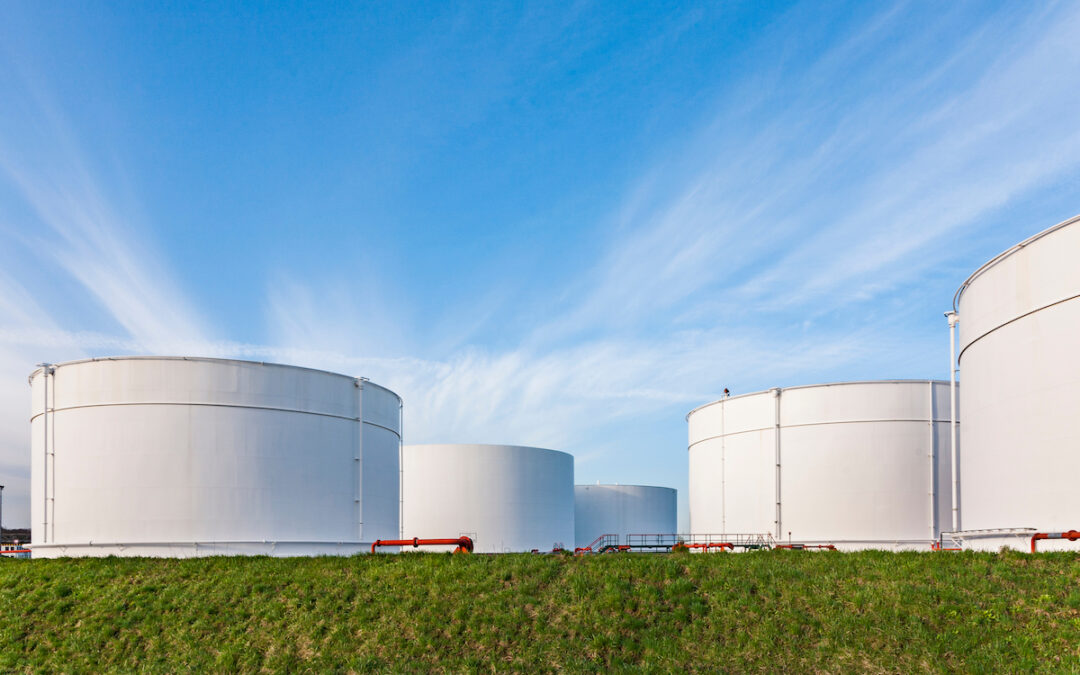Aboveground storage tanks are used throughout industry and manufacturing, from agriculture to petrochemicals, from food production to mining. No matter your economic sector or application, if you have aboveground storage tanks, they’re vital to your organization’s efficient and successful operation.
Keeping those tanks functional and compliant with regulations is therefore essential to keeping things at your facility running smoothly. Since any tank that holds 55 gallons or more and is totally above ground is considered an aboveground storage tank (AST), it’s important that you know the rules and regulations that govern storage tank inspection.
What are the inspection requirements for aboveground storage tanks?
Per the EPA’s Spill Prevention, Control, and Countermeasure Plan (SPCC) Program, tanks must be tested regularly and when repairs are made. You are responsible for determining the necessary type and frequency of inspections, applicable industry standards, and the necessary qualifications of inspection personnel. Your determinations must account for the size of the containers, their design and construction, and their configuration.
Specific aboveground storage tank inspection requirements are set by industry standards. Two of the most common industry standards are published by the Steel Tank Institute (STI) and the American Petroleum Institute (API).
API Standard 653 Requirements
Large aboveground tanks must be inspected to meet API Standard 653, which governs tank inspection, repair, alteration, and reconstruction. API 653 covers aboveground steel storage tanks that adhere to the design specifications in API Standard 650 and API 12. The inspection components of the API 653 standard cover:
- General suitability for service evaluation
- Tank roof evaluation
- Tank shell evaluation
- Tank bottom evaluation
- Tank foundation evaluation
- Brittle fracture assessment procedure
- General inspection
- Inspection frequency
- External tank inspection
- Internal tank inspection
- Inspection checklists
- Inspection records
- Inspection reports
- Nondestructive examination (NDE)
STI SP001 Standard Requirements
STI SP001 Standard for the Inspection of Aboveground Storage Tanks is applicable primarily to metal, welded, shop-fabricated tanks, and field-erected tanks. This includes intermediate bulk containers, 55-gallon drums, and other small, portable containers, and does not include non-portable, shop-fabricated plastic or fiberglass tanks. It requires monthly, periodic inspections by the tank owner as well as formal internal and external inspections by a certified tank inspector.
Your organization’s SPCC Plan must indicate the standard to which your tanks will be inspected, and lay out your inspection frequency and procedures, as well as the qualifications of the personnel who will perform the inspections. Additionally, inspection records must be kept for at least three years, and the EPA recommends retaining these records for each container for the lifespan of said container.
How often should an aboveground storage tank be inspected?
Individual storage tanks should be inspected on a monthly basis, at minimum. They should also be inspected after repairs are made and after severe weather events. This inspection should check the tanks’ base, shell, interior walls, coating, containment ability, electrical components, insulation, and roof. Regular inspections help prevent and mitigate damage and leaks and can increase the life span of your ASTs.
Additionally, your Tank Arrangement Plan (TAP) for your aboveground storage tanks should be inspected and reassessed at least every five years.
What happens if your tanks don’t pass some part of the inspection?
If your ASTs fail any of the aboveground storage tank inspection requirements, the tank must be either decommissioned or repaired to serviceability per the regulations of the applicable industry standard. After repairs are made, the tank must be re-inspected to ensure serviceability before being used.
If your aboveground storage tank failed inspection because of a leak of oil, gasoline, chemicals, or other potentially hazardous substances, in addition to repairing or replacing the tank, you’ll need to ensure that your secondary containment measures effectively contained the spill. If not, you’ll need to report this spill to the EPA and perform any necessary mitigation.
How do you ensure your tanks are always in compliance?
Inspecting your tanks monthly, as suggested earlier, along with proactively performing required maintenance is an excellent start to ensuring that your aboveground storage tanks are always in compliance with aboveground storage tank inspection requirements. For industries with ASTs containing hazardous or volatile substances, ensuring that the secondary containment solutions are adequate and in good condition is another critical consideration.
Keeping thorough, accurate, and well-organized maintenance and inspection records for your storage tanks is another beneficial practice for maintaining tank compliance. Though it exceeds the requirement, keeping these records for the duration of a tank’s lifetime can be invaluable.
If your aboveground storage tank is in need of inspection, or has undergone inspection and came up lacking, PALA can help. From tank fabrication to repair, we have the tools and the team you need to ensure your tanks are safe and in compliance.

